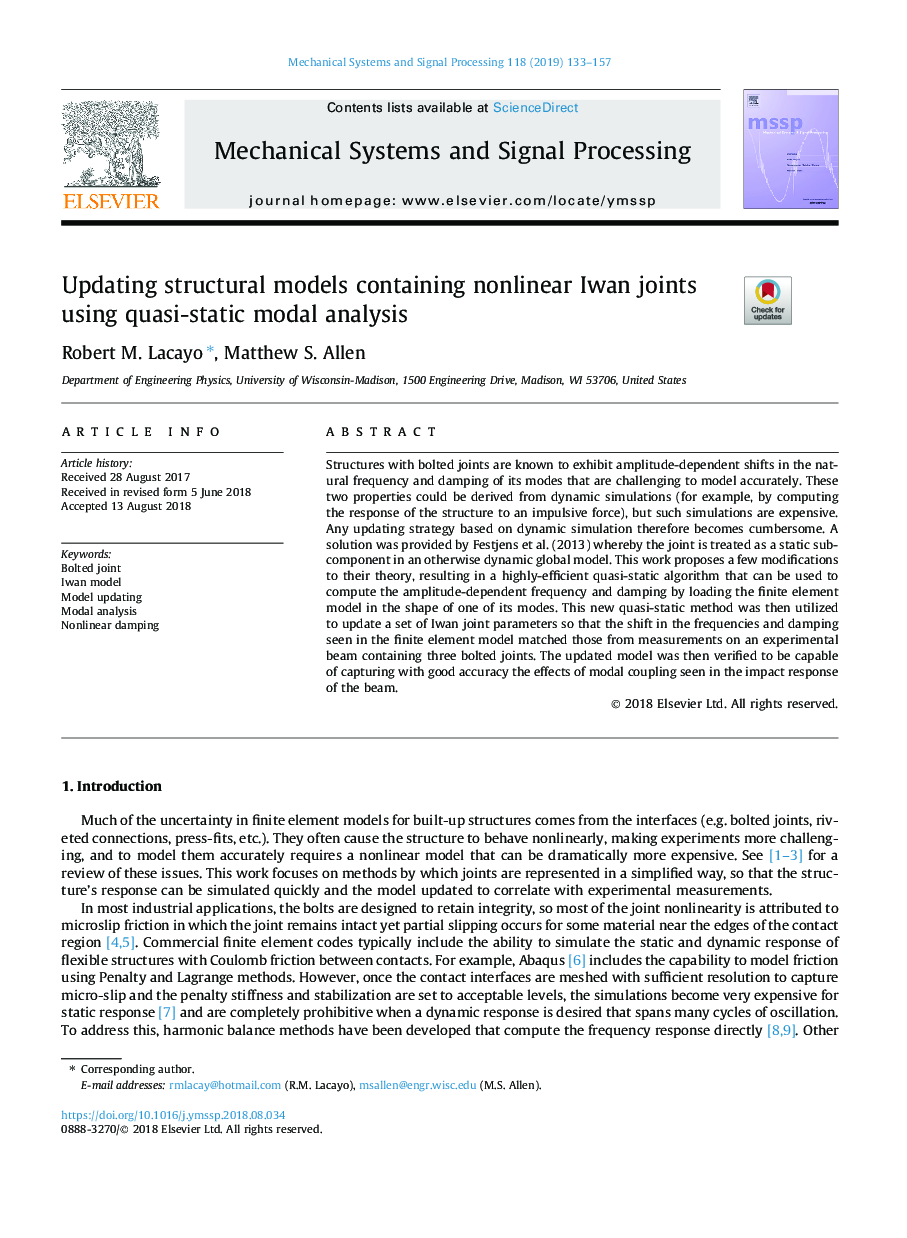| Article ID | Journal | Published Year | Pages | File Type |
|---|---|---|---|---|
| 10132804 | Mechanical Systems and Signal Processing | 2019 | 25 Pages |
Abstract
Structures with bolted joints are known to exhibit amplitude-dependent shifts in the natural frequency and damping of its modes that are challenging to model accurately. These two properties could be derived from dynamic simulations (for example, by computing the response of the structure to an impulsive force), but such simulations are expensive. Any updating strategy based on dynamic simulation therefore becomes cumbersome. A solution was provided by Festjens et al. (2013) whereby the joint is treated as a static subcomponent in an otherwise dynamic global model. This work proposes a few modifications to their theory, resulting in a highly-efficient quasi-static algorithm that can be used to compute the amplitude-dependent frequency and damping by loading the finite element model in the shape of one of its modes. This new quasi-static method was then utilized to update a set of Iwan joint parameters so that the shift in the frequencies and damping seen in the finite element model matched those from measurements on an experimental beam containing three bolted joints. The updated model was then verified to be capable of capturing with good accuracy the effects of modal coupling seen in the impact response of the beam.
Related Topics
Physical Sciences and Engineering
Computer Science
Signal Processing
Authors
Robert M. Lacayo, Matthew S. Allen,
